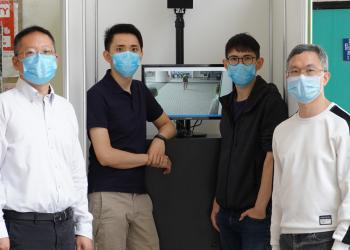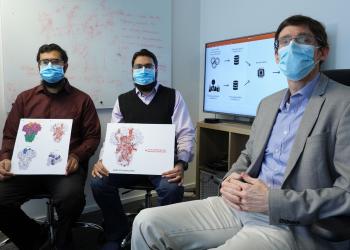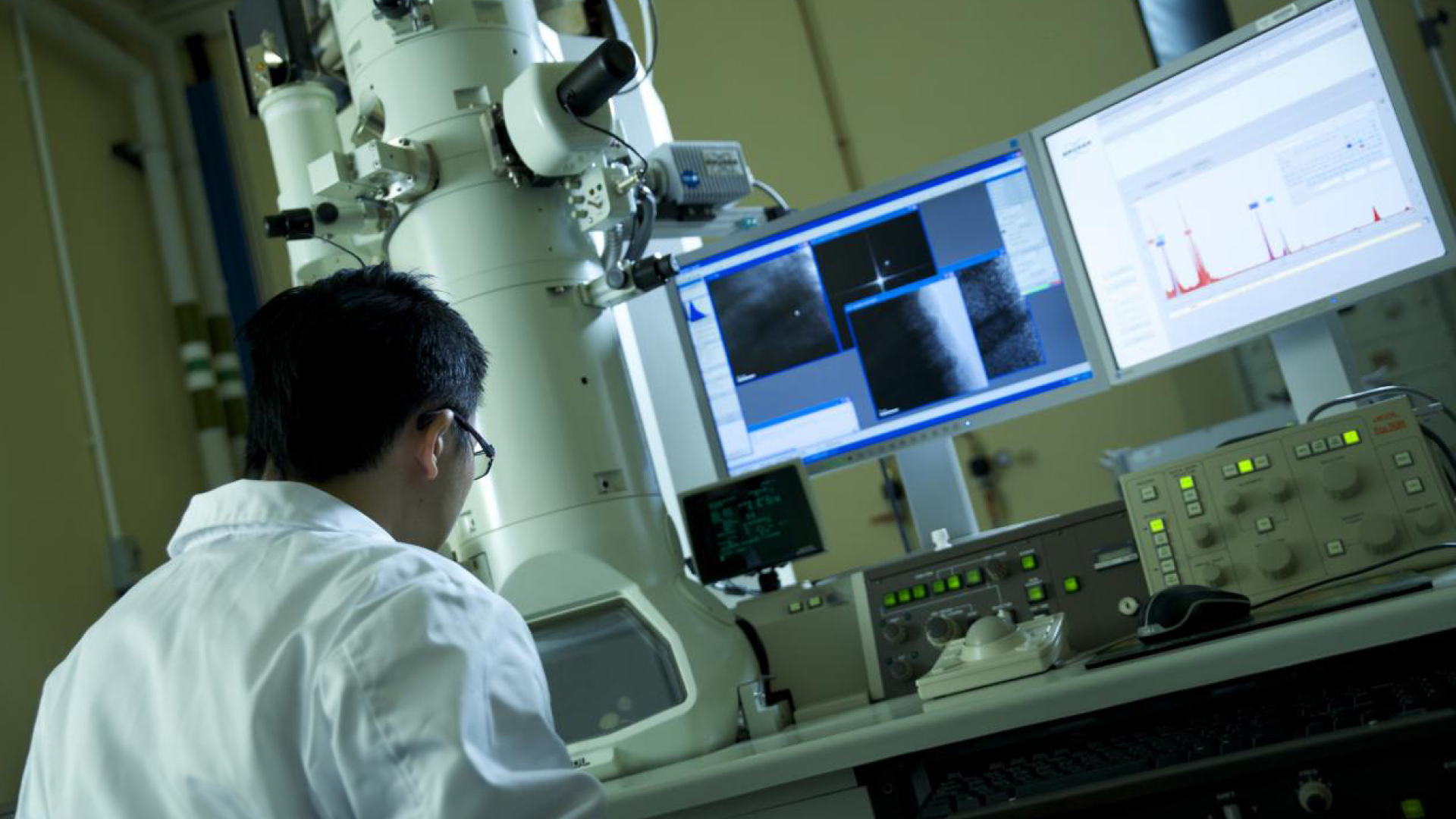News & Stories
2020

News
HKUST Researchers Develop a Smart Fever Screening System Offering a More Efficient Solution to Safeguarding Public Health
Researchers from The Hong Kong University of Science and Technology (HKUST) have developed a novel Smart Fever Screening System (SFSS), which could help officials at the border points to easily identify and distinguish passengers with fever. The system has been implemented at various control points, government facilities and the University in the fight against Covid-19.
Since the SARS (Severe Acute Respiratory Syndrome) outbreak in 2003, thermal imaging detectors have been widely deployed at border points for screening of inbound travelers with fever – an important symptom for patients of SARS, Covid-19 and other infectious diseases. However, officers would have to monitor two screens on both thermal and color (CCTV) images in order to track the unwell person within a matter of seconds.

News
HKUST Researchers Develop Smart Geo-fencing Technology for Home Quarantine amid COVID-19 Pandemic
Researchers of the Hong Kong University of Science and Technology (HKUST) have developed a novel geo-fencing technology, offering a smart core solution that helps save the government’s manpower in monitoring those under compulsory home quarantine amid the novel pneumonia (COVID-19) outbreak.
With the pandemic spreading quickly across the globe, the Hong Kong government has issued quarantine order on people entering the city from all overseas countries and territories. As a compliance measure, people under quarantine have been required to regularly report their current real-time locations via instant messaging applications or answer surprise video calls from communication centers. This approach incurs high monitoring cost to the government, and brings much inconvenience to the home confinees.
News
HKUST Develops New Smart Anti-Microbial Coating in the Fight Against COVID-19
Researchers at The Hong Kong University of Science and Technology (HKUST) have developed a Multilevel Antimicrobial Polymer (MAP-1) coating that is effective in killing viruses, bacteria and even hard-to-kill spores. MAP-1 can inactivate* up to 99.9 per cent of highly-infectious viruses such as measles, mumps and rubella, and 99.99 per cent of the surrogate feline calicivirus (FCV) - a gold standard for disinfection efficiency and is more resistant than coronaviruses such as the one responsible for COVID-19 epidemic.

News
HKUST Scientists Shed Light on COVID-19 Vaccine Development
A team of scientists at the Hong Kong University of Science and Technology (HKUST) has recently identified a set of potential vaccine targets which could be helpful for the development of a vaccine against the SARS-CoV-2 coronavirus – the cause of a novel pneumonia (COVID-19) outbreak which has spread to over 30 countries to date, infecting over 80,000 people and claimed over 2,600 lives*.

News
HKUST Research Team Invents World’s Fastest Coronavirus Detection Device Offering Diagnostic Results in 40 Minutes
Early detection of people infected of the novel Coronavirus has become an imminent challenge around the world as the epidemic continues to develop. A team of researchers from the Hong Kong University of Science and Technology (HKUST) recently invented the world’s fastest portable COVID-2019 detection device. With the latest microfluidic chip technology, the device can detect the virus in just 40 minutes from sampling to testing, compared to the currently-used polymerase chain reaction (PCR) technology which takes between 1.5 to 3 hours.
PCR technology is a molecular biotechnology used to amplify specific DNA fragments for the extraction of viral RNA, and the speed of temperature change is the key that determines the efficiency of the DNA’s amplification process, meaning the faster the temperature rises, the shorter the device can come up with a test result.









